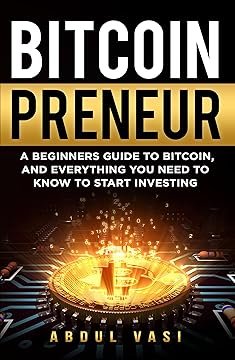When it comes to money, we like to think of ourselves as rational beings. We crunch the numbers, compare prices, and plan our budgets like disciplined financial wizards. But if we’re honest, personal finance is often more about emotions than logic. We don’t just spend money—we feel money. We get excited, anxious, or even guilty when we open our wallets.
Money isn’t just a tool—it’s tied to our sense of security, freedom, and happiness. So if you want to spend less and save more, it’s not enough to approach personal finance from a purely rational perspective. You have to tackle the emotional side of it too. Let’s talk about some habits that can help you manage your money better by understanding the emotional triggers behind your spending.
1. Know Your Emotional Triggers: The Tale of the Midnight Shopping Spree
Let me tell you a quick story about my friend, Arjun. He’s a software engineer by day and a midnight shopper by night. After a long day of work, Arjun would unwind by scrolling through his favorite shopping apps—looking for deals, checking out gadgets he didn’t need, and making impulsive purchases. It wasn’t about what he was buying; it was about how it made him feel.
The thrill of clicking “Add to Cart” was his way of escaping the stress of his job. But when his credit card bill arrived, reality hit hard.
We’ve all been there, haven’t we? We spend money not because we need something, but because it makes us feel better—at least temporarily. The first habit of spending less is recognizing when and why you spend impulsively. Are you stressed, bored, or trying to distract yourself from something else? If you can identify those emotional triggers, you’ll be better equipped to stop the unnecessary spending before it starts.
2. Use the 24-Hour Rule: The Forgotten Jacket
I once walked into a store and spotted a jacket I absolutely had to have. It was sleek, stylish, and expensive. My first thought was, “I deserve this.” But something held me back, and I decided to wait 24 hours before buying it.
The next day, I woke up, looked at the jacket online again, and realized—I didn’t need it. The desire to own it had faded, and I saved myself a good chunk of money.
That’s the beauty of the 24-hour rule: when you feel the urge to make an impulsive purchase, force yourself to wait a day. More often than not, the excitement will wear off, and you’ll find that the purchase wasn’t as essential as you thought.
The habit of pausing before spending gives your emotions time to settle. It shifts you from an emotional decision to a rational one. It’s simple but powerful—and it works.
3. Automate Your Savings: The Pay-Yourself-First Principle
Let’s talk about savings, or rather, the struggle to save. We often think we’ll save whatever is left over after paying bills and spending on “essentials.” But how often does that actually work out?
For most of us, the answer is: it doesn’t. That’s because we prioritize spending over saving when we should be doing the opposite. The habit that turned things around for me was automating my savings. Every month, as soon as my paycheck hits the bank, a percentage of it goes directly into a savings account. I never even see it.
This method is known as the pay-yourself-first principle. When you save automatically, you bypass the emotional tug-of-war between wanting to save and wanting to spend. It’s like putting your savings on autopilot, so you can focus on other things without worrying about whether you’re saving enough.
4. Create a Budget That Works for You: The Case of the Broken Budget
Here’s the problem with most budgets: they’re too strict. They tell you to cut out everything fun—no more eating out, no more shopping, no more weekend getaways. While that might sound like the responsible thing to do, it’s also unrealistic. When your budget feels like a punishment, it’s only a matter of time before you break it.
I’ve been there. I created a budget that had no room for enjoyment, and within a few weeks, I found myself splurging on a fancy dinner just to “reward” myself. That’s when I realized my budget was too rigid.
The key is to create a budget that works for you—one that allows for both savings and spending. Allocate a portion of your income to “fun money” so you don’t feel deprived. This way, you won’t be tempted to blow your entire budget the moment you feel frustrated.
Budgets should be realistic and flexible, not tools for self-punishment.
5. Practice Gratitude: The Tale of Wanting Less
A few years ago, I fell into the trap of always wanting more. A nicer car, a bigger house, a fancier phone—it never stopped. And the more I wanted, the more I spent. It felt like I was always chasing something just out of reach.
Then I stumbled upon the habit of gratitude. Instead of focusing on what I didn’t have, I started paying attention to what I already had—and suddenly, the urge to spend started fading. I realized that the things I already owned were enough.
By practicing gratitude regularly, you can break the cycle of constantly wanting more. It helps you appreciate what you have instead of always striving for the next thing. This simple shift in mindset can have a huge impact on your spending habits. You’ll find yourself needing—and buying—less.
6. Plan Your Purchases: The Grocery Store Experiment
We’ve all done it—walked into a grocery store without a list, only to walk out with way more than we planned to buy. That’s because when you don’t have a plan, you’re more likely to make emotional decisions.
A few years ago, I started experimenting with a simple habit: planning my purchases ahead of time. Before I go shopping, I make a list and stick to it. Whether it’s groceries, clothes, or even tech gadgets, having a plan keeps me focused on what I actually need instead of getting distracted by flashy marketing or sales tactics.
This habit works because it puts you back in control. When you plan your purchases, you’re making a rational decision about what to spend your money on. You’re not letting your emotions—or clever advertising—do the talking.
7. Surround Yourself with Like-Minded People: The Influence of Friends
This one’s a bit more subtle but incredibly important: your spending habits are influenced by the people around you. If your friends are constantly going out to expensive dinners, taking lavish vacations, or splurging on the latest tech, you’ll feel the pressure to keep up—even if it’s not in your best financial interest.
On the flip side, if you surround yourself with people who value saving, investing, and living within their means, you’ll be more likely to adopt those habits too. Your social environment plays a huge role in shaping your financial behavior.
One of the best things I did for my financial health was to find a community of people who shared my values around money. We motivate each other to save, invest, and make smarter financial choices.
Conclusion: Spend Less, Save More—By Understanding Your Emotions
Personal finance isn’t just about math—it’s about feelings. Understanding your emotional relationship with money is the first step to gaining control over your spending and boosting your savings. By adopting these simple habits, you can start making smarter financial decisions without feeling like you’re constantly battling your own impulses.
Here’s a quick recap of the habits:
- Know your emotional triggers—recognize when and why you spend impulsively.
- Use the 24-hour rule—pause before making purchases to see if you really need them.
- Automate your savings—pay yourself first, and make savings a non-negotiable.
- Create a flexible budget—one that allows room for both savings and spending.
- Practice gratitude—appreciate what you have, and you’ll find yourself wanting less.
- Plan your purchases—stick to a list to avoid emotional spending.
- Surround yourself with like-minded people—let your social circle support your financial goals.
As you get better at managing your money, you’ll realize that spending less and saving more isn’t about depriving yourself—it’s about making conscious decisions that align with your values and long-term goals. When you get a handle on the emotional side of personal finance, your financial future looks a lot brighter.




